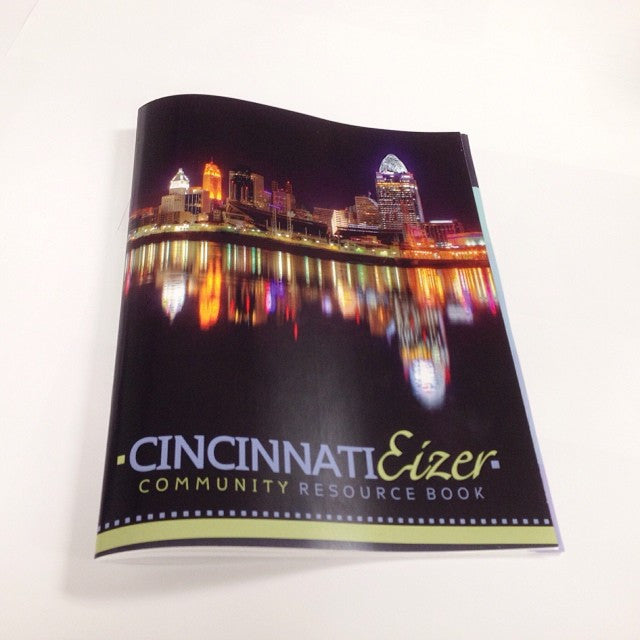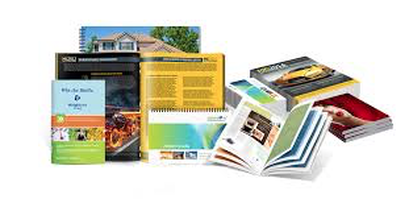The Essential Overview to Comprehending Booklet Printing Options and Techniques
The procedure of booklet printing includes multiple considerations that can greatly impact the final product. From choosing the appropriate format and size to comprehending the nuances of binding methods, each selection plays an essential duty. Furthermore, factors such as paper stock and printing methods more influence the effectiveness of the pamphlet. As one navigates these options, it ends up being important to realize exactly how they adjoin and what that means for the general result.
Comprehending Booklet Styles and Sizes
When taking into consideration pamphlet printing, understanding the numerous layouts and dimensions available is essential for achieving the preferred presentation. Booklets can be produced in various styles, consisting of saddle-stitched, spiral-bound, and perfect-bound, each offering unique benefits. Common sizes vary from standard letter (8.5 x 11 inches) to smaller sized alternatives like A5 (5.8 x 8.3 inches), enabling versatility based on web content and target audience.Selecting the appropriate size can affect both the format and reader involvement. Bigger dimensions may suit visually driven material, while smaller sized styles may be a lot more mobile and straightforward. In addition, the variety of pages impacts the option of binding technique, as thicker brochures may require sturdier bindings. Eventually, understanding these facets enables a much more tailored method, making certain that the end product straightens with the designated message and aesthetic, boosting the overall efficiency of the communication.
Selecting the Right Paper Stock

Binding Techniques: Factors To Consider and alternatives
When it concerns binding methods for pamphlets, a number of choices are readily available, each with distinctive benefits. Saddle stitch binding offers a cost-efficient solution for thinner pamphlets, while excellent binding methods offer an even more sleek seek thicker publications. Wire-O binding stands out for its resilience and convenience of use, making it excellent for files that need flexibility.
Saddle Stitch Binding
Saddle stitch binding offers a cost-efficient and functional option for putting together pamphlets, making it a popular option among organizations and publishers. This binding technique involves folding sheets of paper in half and stapling them along the fold line, creating a organized and cool look. Generally appropriate for pamphlets with a reduced page count, saddle sewing is suitable for publications, pamphlets, and educational products. The simpleness of this method enables quick production and is usually preferred for brief runs or advertising items. It is important to note that saddle stitch binding may not be appropriate for thicker brochures, as the spinal column may not hold up under enhanced weight. Overall, it remains a trusted choice for many printing jobs.
Perfect Binding Methods
Perfect binding is an extensively utilized technique that supplies a expert and sleek surface to brochures and publications. This method entails gluing the web pages with each other at the spinal column using a solid adhesive, permitting for a clean edge and the capability to hold a bigger variety of pages compared to saddle stitching. Perfect binding is particularly appropriate for thicker booklets, such as magazines and yearly records, where a strong, level back is desired. Furthermore, it uses the option for a published cover that can be created to improve aesthetic charm. Factors to consider such as web page matter, paper weight, and the meant usage of the brochure must be taken into account, as they can affect durability and total quality.
Wire-O Binding Choices
Wire-O binding, known for its toughness and adaptability, supplies an excellent choice for brochures that require simple page transforming and an expert appearance. This binding method uses a series of steel loopholes that hold pages firmly, permitting them to lie level when open. It is particularly ideal for directories, discussions, and manuals because of its durable nature. Wire-O binding is readily available in different shades and diameters, fitting different web page counts and densities. Additionally, it permits the inclusion of covers and tabs, enhancing the pamphlet's overall aesthetic. Considerations for Wire-O binding include the choice of cord color, the dimension of the loops, and the level of customization desired, all of which can greatly influence the last item's appearance and capability.
Digital vs. Offset Printing: Which Is Best for You?
When picking a printing approach for booklets, recognizing the differences in between digital and counter printing is vital. Digital printing makes use of contemporary innovation to produce premium prints swiftly and economically, making it perfect for short runs or jobs requiring fast turn-around times. It enables for customization, offering the capacity to print on-demand with minimal waste.In contrast, counter printing is a traditional approach that succeeds in creating huge quantities with consistent top quality. It includes moving ink from a plate to a rubber blanket, then to the paper, which results in exact information and vibrant shades. Nonetheless, counter printing normally requires longer arrangement times and is much more find out here now affordable for bigger volumes.Ultimately, the selection between electronic and offset printing depends upon project requirements, budget plan, and desired amount. For tiny, time-sensitive tasks, digital may be the most effective choice, while balanced out might be better for larger, high-grade manufacturings.

Designing Your Brochure: Tips and Best Practices
When designing a pamphlet, cautious focus to format, font style option, and color use can substantially enhance its efficiency. A well-structured format overviews the visitor's eye, while appropriate font styles assure readability and communicate the preferred tone. In addition, efficient use of color can evoke emotions and emphasize crucial information, making the overall layout a lot more impactful.
Picking the Right Format
How can one successfully select the best design for a brochure? It is crucial to examine the booklet's objective and target audience. A tidy, arranged format improves readability and interaction. Making use of a grid system can assist in straightening components consistently, creating a specialist look. Furthermore, integrating visual hierarchy via differing sizes and placements of pictures and message can guide the reader's eye and emphasize essential info. It is likewise essential to leave adequate white space, which stops congestion and enables for far better focus. Testing various designs through mock-ups can offer insight into how the style does in real-world situations, guaranteeing that the final item meets both functional and aesthetic requirements. Useful Picking Appropriate Typefaces
A well-chosen font can considerably boost the general design of a pamphlet, enhancing the layout and reinforcing the content's message. The option of typefaces need to take into consideration readability, specifically for body text, as it ensures the info comes to all readers. Sans-serif fonts are often favored for digital formats, while serif typefaces can provide a traditional feel in published materials. It's a good idea to restrict font selections to 2 or three to preserve visual coherence. In addition, typeface size plays an important duty; headings need to be distinct but not overwhelming, while body message ought to be comfortable for reading. When selecting font styles, placement with the pamphlet's style and target audience is crucial for effective communication and aesthetic appeal.
Efficient Use of Color
Shade works as an effective device in brochure layout, directing and shaping perceptions visitor emotions. It can evoke sensations of enjoyment, trust, or peace, relying on the hues chosen. Developers ought to think about color concept concepts, making sure that the chosen scheme straightens with the pamphlet's message and target audience. Using cozy shades like red and orange can create seriousness, while cooler tones like environment-friendly and blue foster tranquility.Additionally, comparison plays a crucial function; corresponding colors can enhance readability and visual appeal. Consistency in color use throughout pages further enhances brand name identification and communication. Ultimately, effective color execution not just captures focus but additionally reinforces the brochure's purpose, making it a crucial aspect of successful design.
Completing Touches: Coatings and Unique Impacts
While many consider the material and design of a pamphlet one of the most vital components, the completing touches, such as coverings and special impacts, play a vital role in boosting its overall allure. Coatings can provide security and longevity, making sure that the booklet stands up to damage. Matte surfaces provide an advanced, non-reflective surface, while glossy coverings can make shades appear more eye-catching and vibrant. Special impacts, like embossing or foil stamping, include a responsive dimension that can develop a memorable perception. These techniques can highlight specific locations, accentuating crucial details or producing aesthetic passion. Furthermore, UV finish can provide a high-shine coating that elevates the overall look.Together, these finishing touches not only enhance the brochure's aesthetic however also communicate expertise and focus to information, ultimately leaving a long lasting influence on the reader.
Cost Factors To Consider for Pamphlet Printing
Understanding the different price factors to consider for brochure printing is essential for companies and companies intending to enhance their budget plans. Secret variables affecting expenses consist of the choice of binding, paper, and ink techniques. Better products, such as exceptional paper or specialized inks, commonly boost the total expense. In addition, the size and web page count of the booklet play a substantial function; bigger brochures require even more resources and time to produce.Another vital consideration is the printing technique, whether digital or countered, as each has its own prices structure and viability for various quantities. Organizations ought to additionally consider layout prices, which can differ based on complexity and using specialist solutions. Ultimately, shipping and handling costs can contribute to the overall, especially for big orders. By examining these aspects, organizations can make educated choices that align with their monetary capacities while achieving the wanted top quality in their printed products.
Regularly Asked Questions
What Are the Environmental Impacts of Brochure Printing?
The environmental impacts of booklet printing consist of logging from paper manufacturing, carbon discharges image source from transportation, and waste generation from thrown out products - Booklet Printing. Sustainable methods, such as utilizing recycled paper and eco-friendly inks, can alleviate these results
Just How Can I Guarantee Shade Precision in My Pamphlet?
To assure shade precision in a booklet, one need to utilize calibrated screens, employ specialist color profiles, carry out examination prints, and pick top quality printing services that provide shade matching and proofing options for finest outcomes.
What Is the Typical Turnaround Time for Pamphlet Printing?
The typical turn-around time for pamphlet printing varies depending on the complexity and quantity - Booklet Printing. Normally, it varies from a couple of days to two weeks, influenced by look at these guys factors such as printing approaches and completing needs
Are There Minimum Order Quantities for Brochure Printing?

Can I Publish Brochures in Multiple Languages?
Publishing booklets in several languages is possible. Lots of printing services provide options for multilingual or multilingual formats, enabling reliable interaction. Mindful planning guarantees that create components accommodate various languages without compromising readability or appearances. Additionally, aspects such as paper supply and printing techniques additional affect the effectiveness of the brochure. When taking into consideration booklet printing, recognizing the various layouts and sizes available is essential for attaining the preferred discussion. When selecting a printing technique for booklets, recognizing the distinctions between electronic and offset printing is essential. Furthermore, the size and web page matter of the brochure play a substantial function; bigger booklets require even more resources and time to produce.Another important factor to consider is the printing technique, whether digital or countered, as each has its own pricing framework and viability for different amounts. The ecological impacts of pamphlet printing consist of logging from paper production, carbon emissions from transportation, and waste generation from disposed of materials.
Comments on “The Ultimate Guide to Custom Booklet Printing for Small Businesses”